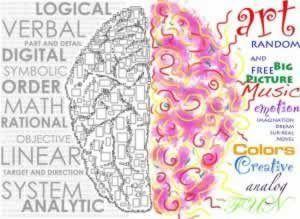How Dyslexics Learn
If you were raised and educated in a traditional school setting as I was, our default method for teaching our kids, despite the enormous amount of freedom that we have as homeschoolers, is to teach how we were taught. The trouble with this is that most teachers and text books teach with a method that does not work well with dyslexic learners.
[intense_heading responsive=”1″ aggressiveness=”1.4″ font_size=”20″ min_font_size=”18″ font_color=”#BA2C3B” font_weight=”400″]So what methods do work with dyslexic learners?[/intense_heading]
[intense_hr color=”#e8e8e8″ accent_width=”30″ accent_height=”3″]
[intense_heading responsive=”1″ aggressiveness=”1.4″ font_size=”24″ min_font_size=”20″ font_color=”#333333″ font_weight=”400″]Understanding Right Brains and Left Brains[/intense_heading]

[intense_heading responsive=”1″ aggressiveness=”1.4″ font_size=”20″ min_font_size=”18″ font_color=”#BA2C3B” font_weight=”400″]The Different Functions of the Right and Left Hemispheres[/intense_heading]
Most dyslexic learners are right-brain dominant. To understand this you need to know a little bit about brain structure.
The brain is made up of two halves or hemispheres – the right brain and the left brain. These are connected to each other by a thick cable of nerves at the base of each brain called the corpus collosum.
A good analogy is that of two separate, incredibly fast and immensely powerful computers, each running different programs from the same input, connected by a network cable.
Most scientists agree that there are definite differences in the way each hemisphere of the brain works. Essentially, the right brain deals with emotions, feelings, creativity, and intuition. The left brain is linear, logical, and focuses on one thing at a time.
[intense_table columns=”Left Brain Functions,Right Brain Functions” data=”Uses logic,Uses feeling,Detail oriented,‘Big picture’ oriented,Verbal,Non-verbal,Facts rule,Imagination rules,Words and language,Symbols and images,Math and science,Philosophy and religion,Order/pattern perception,Spatial perception,Knows object name,Knows object function,Reality-based,Fantasy-based,Forms strategies,Presents possibilities,Practical,Impetuous,Safe,Risk-taking” type=”striped” heading_background_color=”#ba2c3b” heading_font_color=”#ffffff”]
Now that we know more about the dyslexic mind, lets consider some common teaching methods. Think back to how you were taught in school. Read the text, understand, write your answers to the comprehension questions. If you were a left-brained student like me, you loved this (and may have become a teacher or curriculum writer). Just tell me how many pages to do, ma’am! If you were a right-brained student, you likely struggled to learn and got out of school as fast as possible!
Right Brain Teaching Techniques
For a teaching method to work with a right-brained learner, it helps if those methods tap into the right-brained thinker’s natural strengths:
- Use visual resources such as white board or chalkboard
- Doing subjects together in a group with lots of discussion
- In lieu of writing a paper, let students create a project (poster, comic strip, write a movie review instead of a report, etc)
- Play music during study time
- Use color and pictures on flash cards to get spelling or vocabulary words to stick
Understanding Learning Styles
Learning style is a broad term used to describe the factors that influence all aspects of learning. You may have heard the common, simplified view of learning styles as a choice of either the auditory, visual or kinesthetic pathway. While all people use every one of these pathways for learning; most people prefer one over the other. There are many factors that affect a person’s ability to learn.
Knowing the learning style of your student is important in determining how to teach them so they learn. For more information on Learning Styles – read this post Understanding Learning Styles.
Freedom For Individualization With Homeschooling
By intentionally observing your children everyday with these factors in mind, you will come to know what things trigger struggles for your child. I have one daughter who simply cannot focus if there is a lot of noise in the room. I have another daughter who likes to listen to music while she does her schoolwork.
Understanding your child’s learning style isn’t done overnight. Adjusting your homeschool to create a more effective learning environment can be done and perfected over time. However, the freedom to adapt your teaching method to your child’s individual learning style is one of the main benefits to homeschooling the dyslexic child.
Now that you have a better understanding of how dyslexics learn, read How to Choose a Homeschool Curriculum, to find homeschool curricula that will work for your family.
[intense_button color=”#bed262″ font_color=”#ffffff” size=”medium” align=”left” font_size=”18″ link=”/parent-dyslexia-training-course/” title=”Courses” border_radius=”4px”]Visit Our Dyslexia Course Page[/intense_button]



